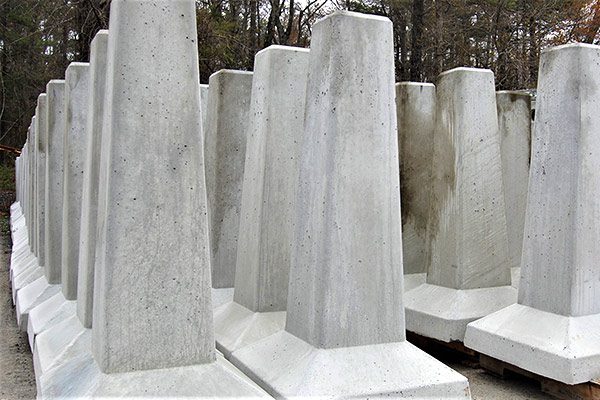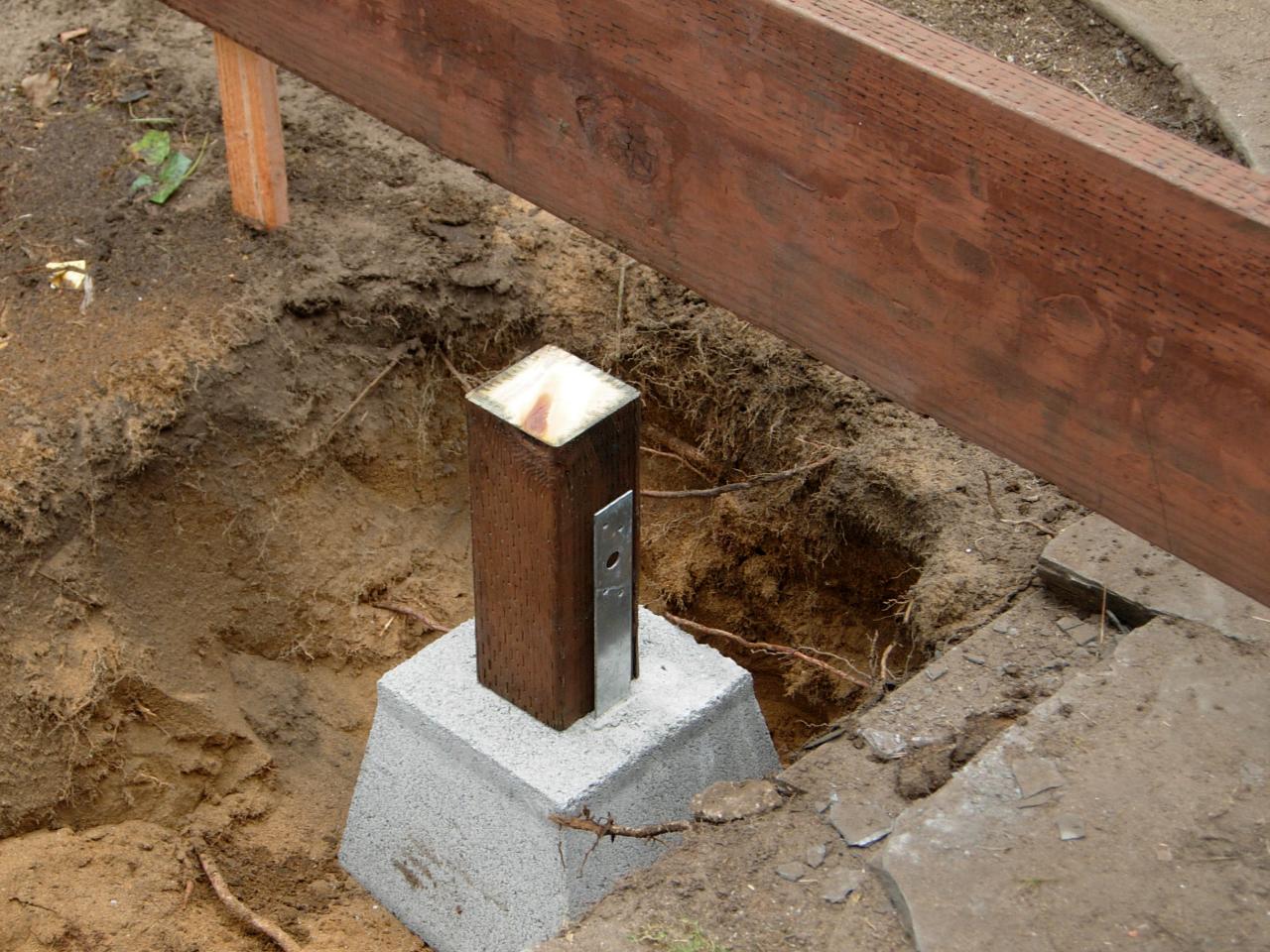Understanding the Art of Deck Footings: Vital Methods for Durable Decks
Wiki Article
Building a Strong Structure: Unveiling the Keys of Deck Ground
When it comes to developing a deck, one critical element that usually goes forgotten is the structure or ground. A strong and properly designed deck ground is important for the security and durability of any type of deck framework. In this useful guide, entitled "Building a Solid Foundation: Revealing the Tricks of Deck Footing," we will certainly check out the relevance of proper grounds, the different types readily available, and the factors to take into consideration when picking the right ones for your deck task. We will certainly offer detailed directions on how to prepare and install footings properly. Last but not least, we will certainly go over the significance of normal upkeep and assessment to make sure the ongoing security and longevity of your deck footings. Join us as we discover the secrets to constructing a trustworthy deck structure.Value of Correct Footings

One of the primary reasons proper footings are essential is to avoid the deck from shifting or sinking. Footings that are not deep sufficient or are poorly created can trigger the deck to resolve erratically or move over time. This can cause an uneven deck surface area, triggering a stumbling hazard and compromising the architectural integrity of the entire deck.

Additionally, correct footings likewise aid to secure the deck from dampness damage. By boosting the deck framework in the air, grounds stop the timber from entering straight contact with moisture, decreasing the danger of rot and degeneration.
Types of Deck Grounds
The option of ideal deck footings is an important aspect in making sure the stability and durability of a deck framework. There are a number of sorts of deck grounds that can be used, each with its own advantages and considerations.One typical kind of deck footing is the concrete pier ground. This entails digging openings in the ground and pouring concrete to create a solid foundation for the deck. Concrete piers are versatile and can be used in a selection of soil conditions, making them a popular selection for several deck projects.
Another choice is the helical pier ground. This kind of ground consists of a steel shaft with helical plates that are screwed into the ground.
For decks improved flat or shallow structures, a superficial footing might be proper. Superficial footings are normally constructed from concrete and are placed directly on the ground surface area. They are best suited for smaller decks or locations with stable soil problems.
Elements to Take Into Consideration When Selecting Grounds
When selecting footings for a deck, it is necessary to carefully consider numerous aspects that will eventually figure out the stability and durability of the structure. The initial variable to consider is the kind of soil on which the deck will certainly be constructed. Different dirt kinds have differing load-bearing capacities, so it is necessary to analyze the soil's capacity to support the weight of the deck. Furthermore, the climate of the area should also be considered. Severe climate condition, such as heavy rainfall or freezing temperature levels, can affect the ground and potentially cause activity or moving of the grounds. An additional vital factor is the size and height of the deck. Bigger decks with heavy loads or multiple levels require even more significant grounds to supply adequate support. Furthermore, the materials used for the footings must be selected intelligently. Typical options consist of concrete, helical heaps, and sonotubes. Each product has its downsides and advantages, so it is vital to take into consideration aspects such as expense, ease of installment, and upkeep needs. Last but not least, talking to a specialist engineer or contractor can make certain and offer useful insights that the chosen footings fulfill local building codes and guidelines. By very carefully considering these variables, home owners can make enlightened choices when picking footings for their deck, making certain a long lasting and steady framework.Actions to Prepare and Install Grounds
To prepare and set up grounds for a deck, it is vital investigate this site to comply with a methodical approach that makes certain stability and resilience. The initial step is to establish the size and number of grounds called for based upon the deck style and neighborhood building regulations. It is important to excavate the dirt to the needed deepness, guaranteeing that all-time low of the ground hinges on undisturbed dirt or compacted crushed rock. The next action involves positioning a concrete type tube or footing type in the opening, ensuring it is level and focused. The kind ought to prolong over the ground level to avoid water damage. Afterwards, reinforcing steel bars, or rebar, are placed inside the kind to provide additional toughness. The rebar must be appropriately protected and spaced according to the engineering specifications. Once the kind and rebar remain in place, concrete can be put right into the kind, loading it to the top. The concrete should be consolidated and smoothed using a shovel or a concrete vibe. The concrete requirements to heal for the preferred period before any type of extra building takes location. By following these steps meticulously, one can make sure next that the grounds are properly prepared and installed, supplying a solid structure for the deck framework.Upkeep and Evaluation of Deck Footings
To guarantee the long-term security and safety and security of your deck, normal upkeep and complete evaluations of the deck grounds are essential. The deck grounds offer as the foundation of your deck, sustaining the weight and lots of the entire framework.Routine upkeep should include visual examinations of the grounds, looking for indications of damages or deterioration. These can include splits, sinking or shifting of the grounds, or signs of water damages. Furthermore, it is very important to examine the security of the grounds by using stress or performing load tests if necessary.
In addition to aesthetic inspections, it is suggested to set up Home Page specialist assessments every couple of years. Professionals can examine the architectural honesty of the grounds a lot more accurately and provide skilled suggestions on any essential repair work or replacements.
Additionally, proper upkeep also includes taking preventative steps to safeguard the footings (Deck Footings). This can include applying waterproof finishes to avoid water damage, making certain appropriate drain to avoid excessive wetness, and routine cleansing to remove particles and stop build-up
Conclusion
To conclude, appropriate deck footings play a crucial duty in making sure the stability and long life of a deck. By recognizing the various sorts of grounds readily available and thinking about variables such as soil problems and neighborhood building ordinance, house owners can make educated choices when picking footings for their deck. In addition, regular maintenance and inspection of deck footings is necessary to determine any type of prospective concerns and ensure the security of the framework.In this informative overview, labelled "Building a Solid Structure: Unveiling the Secrets of Deck Ground," we will explore the significance of proper grounds, the different types readily available, and the factors to consider when picking the appropriate ones for your deck project.One common kind of deck footing is the concrete pier ground.To make certain the long-lasting security and safety and security of your deck, regular upkeep and complete examinations of the deck grounds are crucial.In verdict, appropriate deck grounds play an important function in ensuring the stability and longevity of a deck. By recognizing the various types of grounds available and considering elements such as soil problems and regional structure codes, house owners can make enlightened decisions when selecting footings for their deck.
Report this wiki page